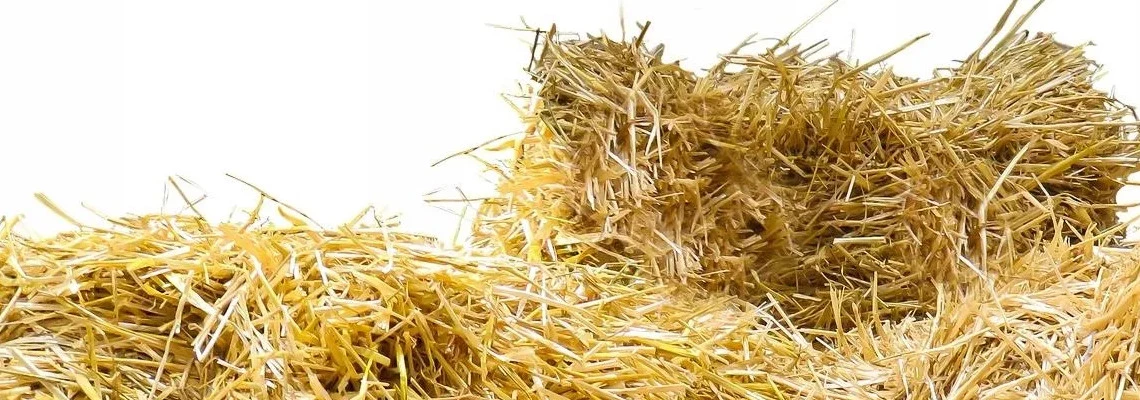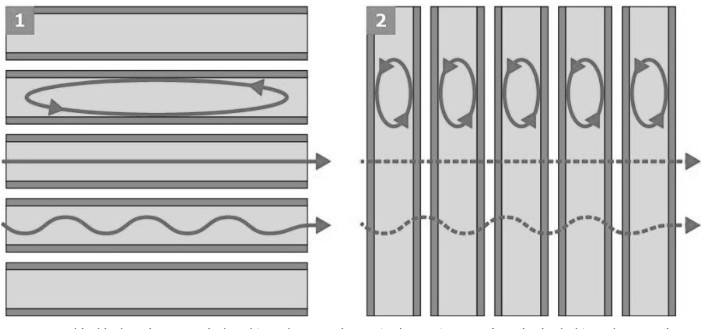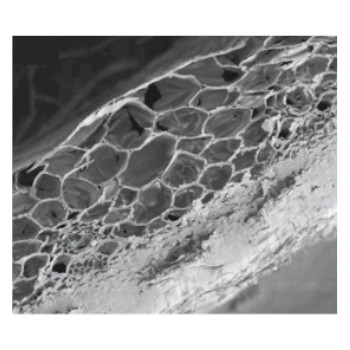
CAN YOU MAKE YOUR OWN INSULATION?*
In these fast-changing times, we're dealing with big shifts globally, from the challenges of the Covid pandemic to the possibility of a third world war. A widespread trend has emerged with the increase in money printing across the globe, resulting in our bills nearly tripling in size.
In an attempt to cut costs and make our homes more energy efficient, many turn to investing in thermal insulation. However, these intentions often hit a wall upon receiving the first quote for insulation materials. The prices have soared, putting them out of reach for many.
This prompts us to consider a "great reset", a return to simpler times, reminiscent of the I Industrial Revolution. Back then, people used animals for field work and insulated their homes with materials like straw, hay or even rags.
But is such a return feasible today? Can we truly embrace these age-old practices, especially as we stand on the brink of the IV Industrial Revolution, where robots and artificial intelligence are poised to revolutionise the production of thermal insulation?
There are still individuals living this way, and this article delves into their lifestyles. By reading it, you'll explore alternative method of home insulation, understanding their practical aspects and implications. You'll also uncover whether such approaches may align with modern regulations in the UK and whether you can embark on your own insulation project.
EXPLORING OLD WISDOM FOR HOME INSULATION: GOING BACK TO BASICS
So, let's say the Government gives the green light for DIY insulation materials.
In such a scenario, we might embark on a journey through history, drawing insights from our predecessors. Back in the day, they didn't have fancy thermometers to tell them the exact temperature inside and outside. Nope, it was a trial-and-error game.
Now, those smart folks who had the cosiest homes didn't have the latest gadgets. They just picked the best insulation without even knowing it. Sadly, these wise folks are no longer around, but they left us their homes as a clue. Turns out, back then, compacted straw was the go-to insulation material.
So, if you're thinking of doing your insulation, why not keep it simple and use straw? No need to reinvent the wheel when the old ways worked pretty well.
STRAW BALE YOUR NUMBER ONE DIY INSULATION
As of today, straw bale insulation stands out as the most popular and cost-effective method for DIY alternative insulation, with an R-value typically falling within the range of 2.38 per inch, comparable to materials such as mineral wool.
Straw is used in its raw state, without processing that typically involves additional energy expenditures.
Furthermore, the literature states that a ton of straw contains approximately 420 kg of stored carbon absorbed through the uptake of carbon dioxide during its growth. During the process of photosynthesis, one kilogram of straw is capable of absorbing around 1.5 kg of CO2. This exemplifies a material with a negative, or beneficial, carbon footprint.
Therefore, straw finds its primary application in construction as a filling material for frame walls. It is commonly used in the form of compressed blocks of varying sizes, secured with steel wire.
Grain straw, a plant-based resource, is derived as a byproduct from cereal crops such as rye or wheat.
For the production of straw bales, it is essential to use intact stems without weed content, possessing a golden-yellow colour and showing no signs of biological corrosion. The surface of straw bale walls is typically finished with clay plaster on the interior side due to its lack of water resistance and lime plaster on the exterior side.
Grain straw, much like other fibrous materials (e.g., wood), is an anisotropic material. It exhibits different properties depending on the direction of the external force.
A notable example illustrating this behaviour is the flow of heat through a straw bale.

Pic. Straw bale heat flow
Picture credit:izolacje.com
Straw stems oriented perpendicular to the heat flow direction have a lower thermal conductivity coefficient than when oriented parallel to the heat flow. Each successive wall of straw stems acts as a barrier to the heat flow.
During the compression of straw bales, the stems tend to align themselves perpendicular to the compression direction. Consequently, the stems in a straw bale are not randomly oriented, though due to their brittleness, they are not perfectly directed in a specific orientation either. The bale can be laid flat or on its edge, resulting in different thermal permeabilities. According to German technical approval, the following thermal conductivity coefficient values were obtained:
For heat flow parallel to the stems: 0.08 W/(m·K)
For heat flow perpendicular to the direction of stem alignment: 0.052 W/(m·K)
In the article titled "A review of material properties and performance of straw bale as building material" by C.H.A. Koh and D. Kraniotis, published in Construction and Building Materials, the thermal conductivity range of straw is presented to be approximately 0.043 W/(m·K) to around 0.082 W/(m·K) within densities ranging from about 58 to 125 kg/m3.
The favourable thermal insulation characteristics of straw bales are attributed to both the voids between densely packed stems and the air spaces within the stems themselves. Similar to other insulation materials, the thermal conductivity of straw increases with rising temperature and moisture content.

Pic. Straw bale structure
Picture credit:izolacje.com
According to calculations presented in the report by C. Rye, C. Scott, "The SPAB Research Report 1 U-value Report" in 2012, the thermal transmittance coefficient (U-value) for a wall made of straw bales with a thickness of 43.5 cm, covered with lime plaster having a thermal conductivity coefficient of 0.8 W/(m·K), was 0.16 W/(m2·K). Therefore, the use of the conventional thickness of straw bale walls allows for compliance with current thermal requirements.
Another significant thermal parameter is the specific heat/capacity of straw. This parameter influences the material's ability to accumulate heat.
According to research by T. Ashour in "The Use of Renewable Agricultural By-products as Building Materials" published by Scholars’ Press in 2003, the volumetric coefficient of the specific heat of wheat straw increased from 164 kJ/(m3·K) to 276 kJ/(m3·K) with a rise in density from 82 kg/m3 to 138 kg/m3.
STAW BALE vs FIRE
Loose wheat straw is undoubtedly highly flammable. When a flame is applied, it ignites and continues to burn for an extended period even after removing the flame. However, when compacted into bale form for use as insulation material in walls, its fire resistance is enhanced. The compressed straw stems create a structure that inhibits the inflow of oxygen, crucial for sustaining the spread of fire. Applying clay and lime plasters on both sides significantly improves the fire resistance of straw bale walls.
Fire resistance classifications include time limits in minutes: 15, 30, 45, 60, 90, 120, 180, 240, or 360, indicating the time it takes for a material to meet performance criteria during a standardised fire test.
Based on studies, load-bearing walls constructed from straw bales, and coated on both sides with clay plaster averaging 3-5 cm in thickness, attained a fire resistance rating of thirty minutes under load-bearing circumstances..
CONCLUSION
Thermal insulation using straw bale blocks can serve as an alternative to other commonly used wall insulation materials. The low density and porous structure of straw bales provide excellent thermal insulation properties. It is a minimally processed material with a negative carbon footprint. Straw bales are very affordable, widely available from farmers, and certainly a much healthier insulation materials. Whether and what thickness of straw insulation we can use essentially depends on local regulations and whether we can comply with them
Related articles:
THE BIGGER THE R, THE SMOOTHER THE RIDE!
WHAT TO CONSIDER WHEN CHOOSING INSULATION MATERIALS
SMART THERMAL INSULATION THAT'S CHANGING THE GAME
THE PRICE OF COMFORT: UNRAVELLING WHY INSULATION IS SO EXPENSIVE
WHAT CAN GO WRONG WITH INSULATION? COMMON ISSUES AND SOLUTIONS
*Insulationgo LTD strives to keep the content accurate and up-to-date, but we cannot be held responsible for any mistakes or exclusions.
The information in this blog isn't expert advice and shouldn't replace talking to the right specialists. Before buying or deciding anything based on this info, it's best to contact the product manufacturer directly to double-check if it's right for what you need.
Descriptions, drawings, photographs, data, proportions, weights, and measured values provided here may change without prior notice and do not establish the guaranteed contractual quality of the products. The recipient of these products holds the responsibility to comply with proprietary rights, existing laws, and legislation.
Using this blog implies acknowledgment and agreement that Insulationgo LTD cannot be held accountable for any damages, losses, or inconveniences resulting from the use or reliance upon the information provided. This limitation of liability extends to all users of the blog, including visitors, readers, and subscribers.










































































































